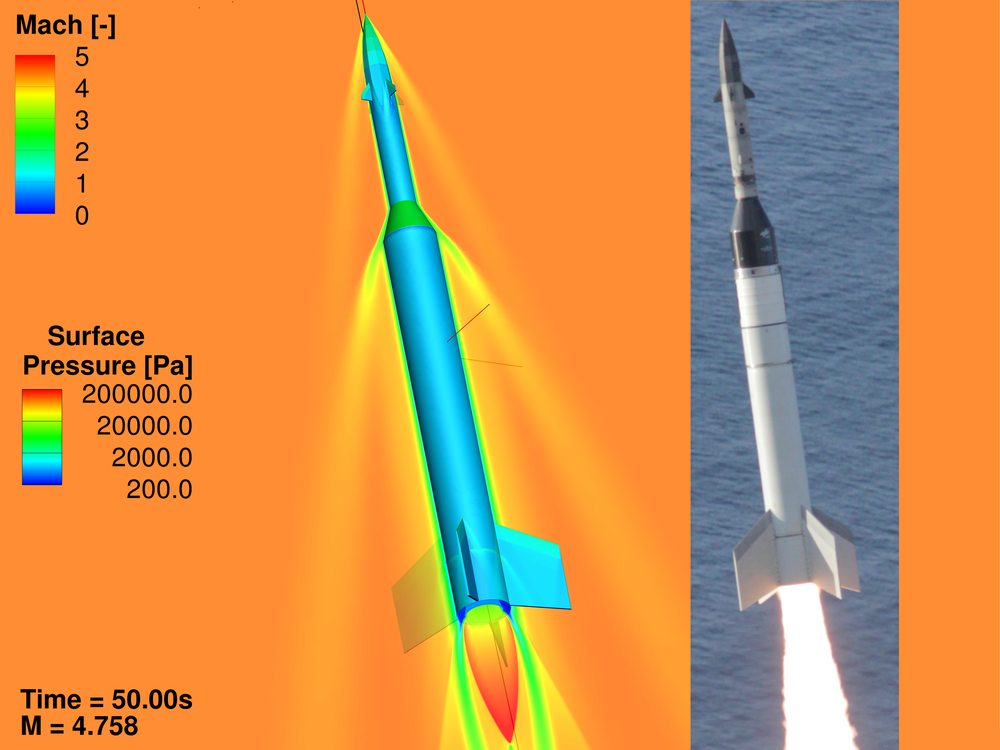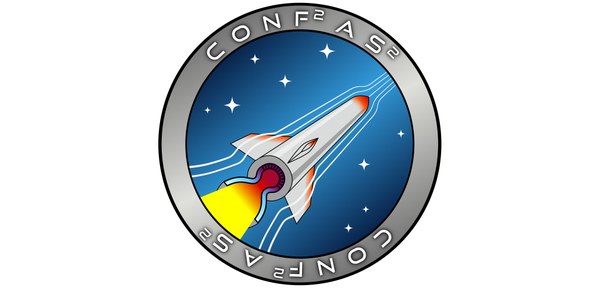Coupled simulations are used to study the loading of various structural components in a spacecraft. Heat loads that occur, e.g. during re-entry from an orbit or during ascent of the launcher through the dense atmosphere, are critical for the vehicle design. The ability to simulate the flight trajectory also allows to analyze the aerodynamic stability and controllability, as well as the influence and effectiveness of control surfaces. For propulsion components, the simulations help to understand and optimise the internal processes within the complex system. The heat transfer, mixing and chemical processes in engines using liquid fuels are of particular interest.
CONF²AS²

One focus of DLR's Space Transportation Program is the investigation of future reusable space transportation systems. Current developments often focus on the high requirements for safety and efficiency as well as the reduction of development costs. Due to the increasing available computer capacities on current High-Performance Computing systems (HPC, at DLR the CARA Cluster), it is increasingly possible to numerically investigate complex overall systems in early development phases. Since application-oriented space systems have to meet diverse, sometimes contradictory, high demands, it is necessary to be able to represent the mutual influences of a multitude of physical processes in a simulation.
Multidisciplinary simulations that are capable to reproduce the mutual influence of flow phenomena and structural effects such as deformation and heat transfer, as well as the motion and control of free-flying vehicles, are increasingly coming into focus in all phases of spacecraft development and operation. Under the title CONF²AS², an integrated simulation environment based on the FlowSimulator is being extended based on existing work and in-house developments for aeronautic applications. In this environment different single field solvers are controlled and the data exchange is efficiently organized.
For fluid simulations currently mainly methods developed in DLR are being used. These include in particular the finite-volume RANS solver TAU and its successor the CFD-software from ONERA, DLR and Airbus (CODA), as well as reduced order methods for the calculation of supersonic flows. Depending on the desired level of detail, it is possible to simulate flows of ideal and real gases from the subsonic to the hypersonic range, including chemical reactions.
The aim is to numerically design and investigate components such as the engine and its subsystems (combustion chamber, cooling channels, nozzles) as well as the entire spacecraft. In addition, the numerical investigations are used to design experiments, which in turn are used to validate the numerical methods. The institute is responsible for the method development as well as for the execution of the simulations.
Key features
- enables multi-physical simulations (flow, structure, flight mechanics)
- integrates numerical methods of varying accuracy
- enables coupled simulations for detailed and preliminary analysis
- efficient use of HPC resources through FlowSimulator Framework
License notice
Access to these software products can only be granted if the organization you are representing holds a valid license or your organization is interested in signing such a license. If either of the aforementioned two points are fulfilled please get in touch with us providing additional information. Afterwards, we will support you in getting access to our software products. Please note, that we are, in general, not signing license agreements with private individuals.

